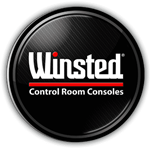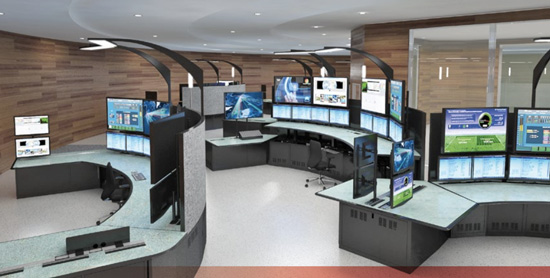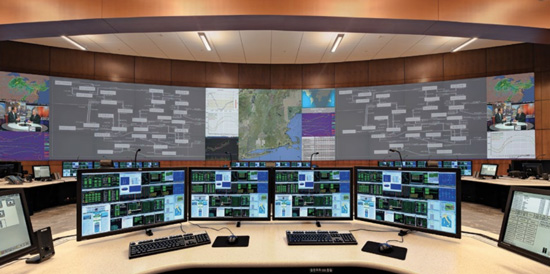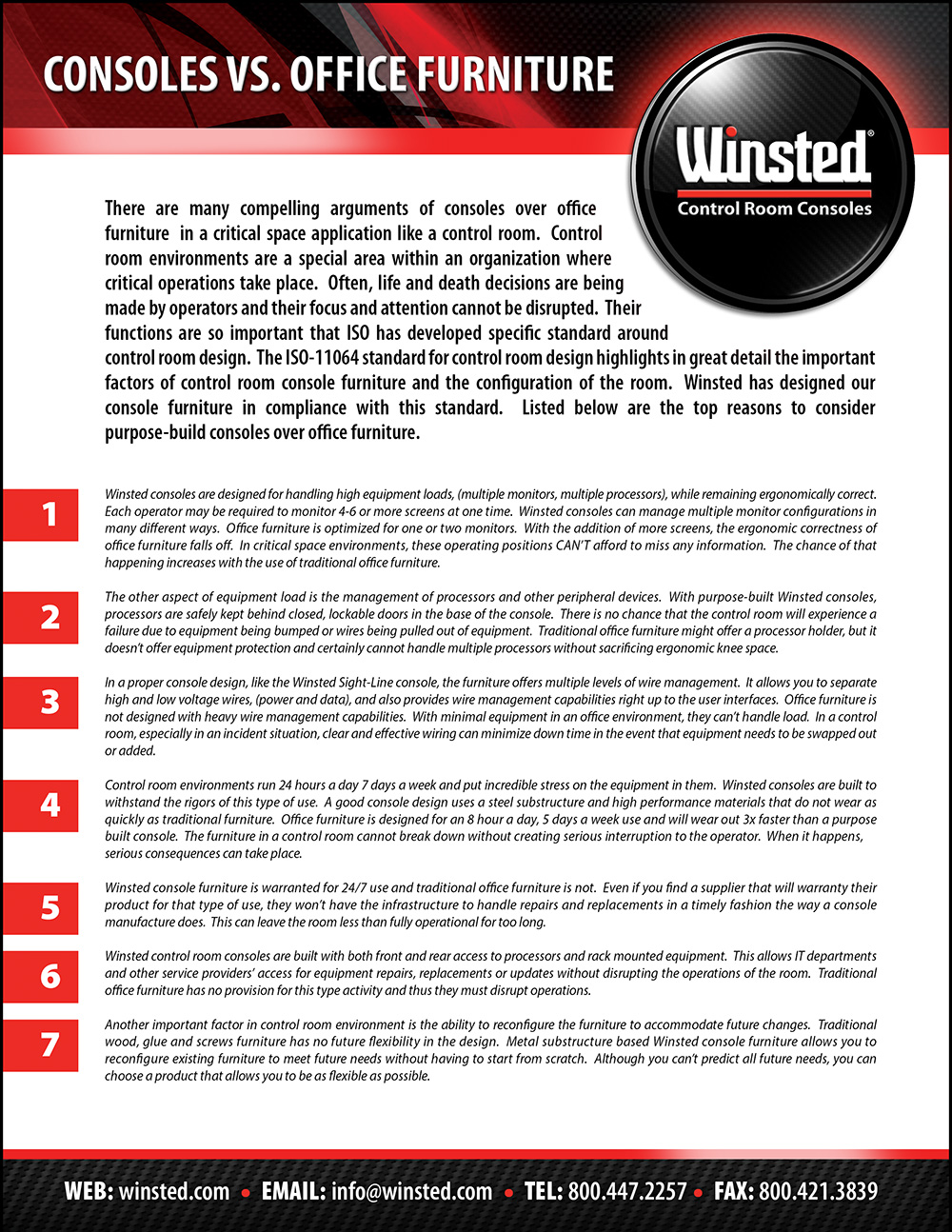
3 keys to optimizing the design of control room consoles
By Vanessa Graves, Winsted Custom Design
Effectively designing a modern control room requires close attention several specific variables to truly optimize the operating environment.
Defined as “the science of fitting workplace conditions and job demands to the capabilities of the working population,” by the Occupational Safety and Health Administration, ergonomics sounds like a simple match game between the employee and work conditions. However, with all the factors that affect control room ergonomics, it has become more about designing the console around the employee.
To truly satisfy today’s heightened ergonomic standards, console design has experienced a dramatic shift to deliver solutions that are smaller, with improved functionality and more appeal than ever before. Current console design is done with a more comprehensive, top-down approach to control room planning, examining every element of the console itself, as well as the overall layout of the room. Control room planners are now incorporating every aspect of human, machine and environment interaction, from monitor tilt and indirect lighting to air temperature and movement, to create the optimal working conditions and comfort level.
When designing an industrial control room, there are some key factors to consider. Here we’ll review three keys to successful control room design in the modern age.

Effectively designing a modern control room requires close attention several specific variables to truly optimize the operating environment. (Images courtesy of Winsted. Used with permission)
1. Room Architecture
To effectively design a control room, you need to understand the space you are working with. Is it completely configurable, or are we working within a shell that needs to be adapted as best as possible for the room purpose requirements?
Size & Layout
The control room itself is important because it serves as the shell of the system. When selecting a room, designers should consider the control room objectives and determine how much equipment and people the room will house. The size of the room should accommodate all necessary equipment, while allowing for people to comfortably move about.
Physical layouts should also accommodate the use of non-electronic equipment and documents, such as operations manuals, log books, maps and clipboards. Space should also be allowed for positioning such items as telephones, keyboards, mice, controllers, radio/intercom and writing areas.
Shape
In addition to size, there are a variety of room shapes. A rectangular room provides the most options for equipment, display and console positioning. In general, rooms with sharply angled walls or with support columns should be avoided. Designing a control room of the right size and shape can go a long way toward achieving an efficient, comfortable operating environment.
Materials
The room materials should also be considered. Ceiling materials should offer moderate to high reflectance of 0.8 or higher to improve light distribution throughout the room and reduce energy cost. The ideal walls in a control room feature an off-white matte or flat finish with a reflectance range of 0.5 to 0.6. Floor materials should have a lower reflectance of 0.2 to 0.3 for carpet or 0.25 to 0.45 for floor tiles.
Windows
Operators typically do not like working in windowless environments. Unless prescribed for operational or security reasons, it is strongly recommended that north-facing windows are included in a control room, primarily for psychological reasons. However, such light sources also present potential security challenges and can contribute to reflections and glare. Windows and doors should be out of the primary field of view but visible from a seated position.
Also, it is important to allow circulation space around doors to minimize congestion.
Aesthetics
Customized consoles with logos, images and designs allow companies to create a one-of-a-kind console that highlights their corporate identity. From a simple decal to an intricate, multi-color Corian inlay, custom consoles provide a unique control room solution.

Modern control room consoles have extensive advantages over basic office furniture.
2. Room Environment
What will the occupants be doing in this room? The type of activity is affected by the space.
Design managers must account for environmental factors, including a requirement for auditory or visual tasks, air quality and temperature, equipment housing, lighting, structure materials, windows and room shape.
Auditory or Visual Tasks
For control rooms that require speech communication, all auditory needs of the environment must be appropriately specified. To control ambient noise levels, users must consider room and console finishes, noise output of equipment and external commotion. Ceiling acoustics should strive to achieve an NRC (noise reduction coefficient, a measurement of sound absorption characteristics) of 0.65 to 0.75 or better and an AC (articulation class, a measurement of attenuation) of 40 to 44 or better.
Air Quality & Temperature
Air quality and air temperature play an important role in keeping operators awake and alert. One of the most common criticisms of control room design is the lack of consistent ambient temperature. For example, an air conditioning system is automatically set to increase the temperature to compensate for natural early-morning drops in body temperature. For optimal comfort, room temperature should range from 70 F to 72 F, with relative humidity from 40 to 65 percent.
Air movement should not exceed 4 to 6 inches per second.
Lighting
Lighting within control rooms should be suitable for all visual tasks. A lighting scheme largely based on indirect ambient lighting, where the ceiling reflects light down into the room, has been found to offer an effective solution. In designing a lighting scheme, attention should be given to the range of tasks performed as well as operators’ ages. Low levels of lighting may be fine for image monitoring but can pose problems with paper-based tasks. Operators of all ages, but especially older workers, will require adjustable task lighting to conduct small-scale visual projects.
3. Operator Requirements
What is the mix of occupants that will be using the workspace – and for what periods will they be using it.
Operator requirements vary for each control room, as they are dependent on not only application but also on the overall objectives and functionality of each control room. The number of operators on staff depends largely on the application and size of the overall organization. However, in any given control room, typical job duties can include:
- Ensuring that everything is under control and working as desired
- Monitoring, troubleshooting and managing equipment usage and work progress
- Assessing machine logs and supporting troubleshooting
- Adhering to plant operational procedures for production goal achievement and handling work safely
- Inputting operational system status with applicable journals and control system tools
- Functioning as plant operation to calibrate and troubleshoot automation, power and building interface systems
- Gaining awareness of system operating requirements and trends and suggesting operating adjustments
- Managing electrical and mechanical equipment and facilities with the competency of a plant operator
- Conducting emergency operations for electrical service and protecting station equipment
- Overseeing control desk
- Replying to production floor requests and machine stoppage alerts
- Overseeing productions and process key metrics for operating plant machinery within parameters
- Handling equipment maintenance and tag-out as per standard operating procedures
- Ensuring timeliness, completeness and administrative requirements accuracy
- Receiving and replying to calls on organizations and agencies

Vanessa Graves has a bachelor’s degree in Industrial Design from Georgia Institute of Technology. She’s designed ergonomically correct consoles for control rooms for over 13 years at Winsted Custom Division.
This content is sponsored by Winsted. Sponsored content does not necessarily reflect the editorial views of Processing.